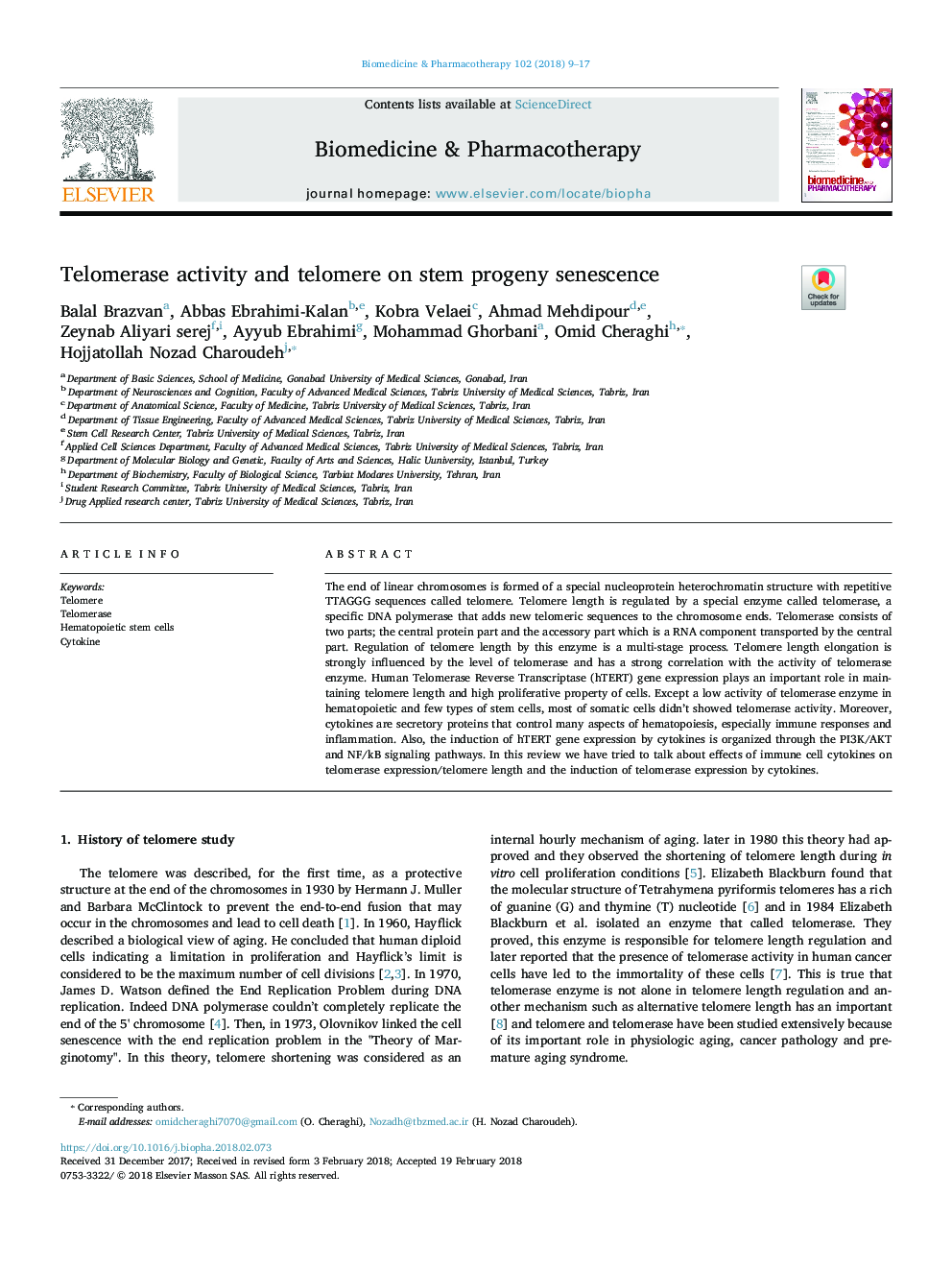| Article ID | Journal | Published Year | Pages | File Type |
|---|---|---|---|---|
| 8524905 | Biomedicine & Pharmacotherapy | 2018 | 9 Pages |
Abstract
The end of linear chromosomes is formed of a special nucleoprotein heterochromatin structure with repetitive TTAGGG sequences called telomere. Telomere length is regulated by a special enzyme called telomerase, a specific DNA polymerase that adds new telomeric sequences to the chromosome ends. Telomerase consists of two parts; the central protein part and the accessory part which is a RNA component transported by the central part. Regulation of telomere length by this enzyme is a multi-stage process. Telomere length elongation is strongly influenced by the level of telomerase and has a strong correlation with the activity of telomerase enzyme. Human Telomerase Reverse Transcriptase (hTERT) gene expression plays an important role in maintaining telomere length and high proliferative property of cells. Except a low activity of telomerase enzyme in hematopoietic and few types of stem cells, most of somatic cells didn't showed telomerase activity. Moreover, cytokines are secretory proteins that control many aspects of hematopoiesis, especially immune responses and inflammation. Also, the induction of hTERT gene expression by cytokines is organized through the PI3K/AKT and NF/kB signaling pathways. In this review we have tried to talk about effects of immune cell cytokines on telomerase expression/telomere length and the induction of telomerase expression by cytokines.
Related Topics
Health Sciences
Medicine and Dentistry
Oncology
Authors
Balal Brazvan, Abbas Ebrahimi-Kalan, Kobra Velaei, Ahmad Mehdipour, Zeynab Aliyari serej, Ayyub Ebrahimi, Mohammad Ghorbani, Omid Cheraghi, Hojjatollah Nozad Charoudeh,
